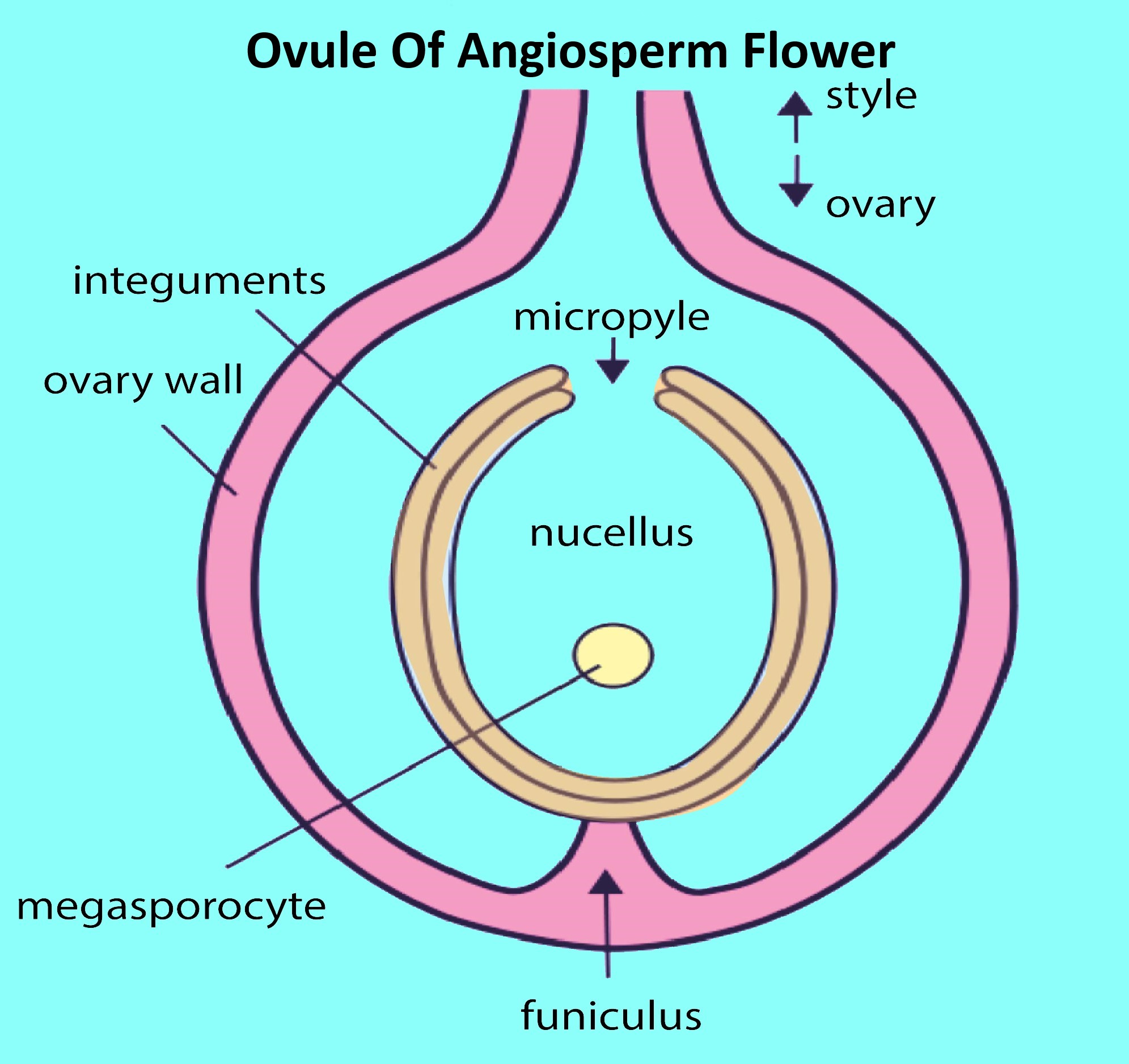
Answer
467.7k+ views
Hint: This mass of tissue is the largest part of the ovule which contains the embryo sac. It also surrounds and protects the embryo. Its size and shape become a diagnostic feature of some species. In immature ovules, it contains the megasporocyte or the megaspore mother cell which later undergoes sporogenesis.
Correct step by step answer:
The nucellus is a mass of parenchymatous tissue forming the bulk of the ovule in which the embryo sac is present. It grows by additional divisions in subepidermal layers. It surrounds the embryo sac and is five to 10 cell layers thick in the area of the antipodal cells, in which only one or a few layers are present nearer to the egg apparatus.
- Obturator is a structure of an ovule. It is responsible for directing the growth of the pollen tube that occurs towards the micropyle. It may originate either from the placenta or funiculus or even both the structures.
- The female gametophyte is the embryo sac which is a 7- celled structure consisting of egg apparatus, a large central cell, and three antipodal cells. It develops from the megaspore which is formed in the nucellar tissue of the ovule.
- The endosperm is the nutritive structure formed from triple fusion inside the seeds of most of the flowering plants following fertilization. It provides nutrition to the developing embryo.

So, the correct answer is,’ nucellus’.
Note:
- Cells of the nucellar epidermis have a more compact shape and denser cytoplasm,
- The mass of the nucellus degenerates after fertilization whereas the nucellar epidermis persists for some time.
- In some flowering plants, the nucellus remains present after fertilization as a source of nutrients for the embryo.
Correct step by step answer:
The nucellus is a mass of parenchymatous tissue forming the bulk of the ovule in which the embryo sac is present. It grows by additional divisions in subepidermal layers. It surrounds the embryo sac and is five to 10 cell layers thick in the area of the antipodal cells, in which only one or a few layers are present nearer to the egg apparatus.
- Obturator is a structure of an ovule. It is responsible for directing the growth of the pollen tube that occurs towards the micropyle. It may originate either from the placenta or funiculus or even both the structures.
- The female gametophyte is the embryo sac which is a 7- celled structure consisting of egg apparatus, a large central cell, and three antipodal cells. It develops from the megaspore which is formed in the nucellar tissue of the ovule.
- The endosperm is the nutritive structure formed from triple fusion inside the seeds of most of the flowering plants following fertilization. It provides nutrition to the developing embryo.

So, the correct answer is,’ nucellus’.
Note:
- Cells of the nucellar epidermis have a more compact shape and denser cytoplasm,
- The mass of the nucellus degenerates after fertilization whereas the nucellar epidermis persists for some time.
- In some flowering plants, the nucellus remains present after fertilization as a source of nutrients for the embryo.
Recently Updated Pages
A ray of light passes through an equilateral prism class 12 physics JEE_Main

The size of the image of an object which is at infinity class 12 physics JEE_Main

When a glass slab is placed on a cross made on a sheet class 12 physics JEE_Main

Rays from Sun converge at a point 15 cm in front of class 12 physics JEE_Main

For the circuit shown in figure the equivalent capacitance class 12 physics JEE_Main

If on applying the potential of 20 V on a conductor class 12 physics JEE_Main

Trending doubts
Which are the Top 10 Largest Countries of the World?

What is the definite integral of zero a constant b class 12 maths CBSE

Differentiate between homogeneous and heterogeneous class 12 chemistry CBSE

What are the major means of transport Explain each class 12 social science CBSE

Explain sex determination in humans with the help of class 12 biology CBSE

How much time does it take to bleed after eating p class 12 biology CBSE




